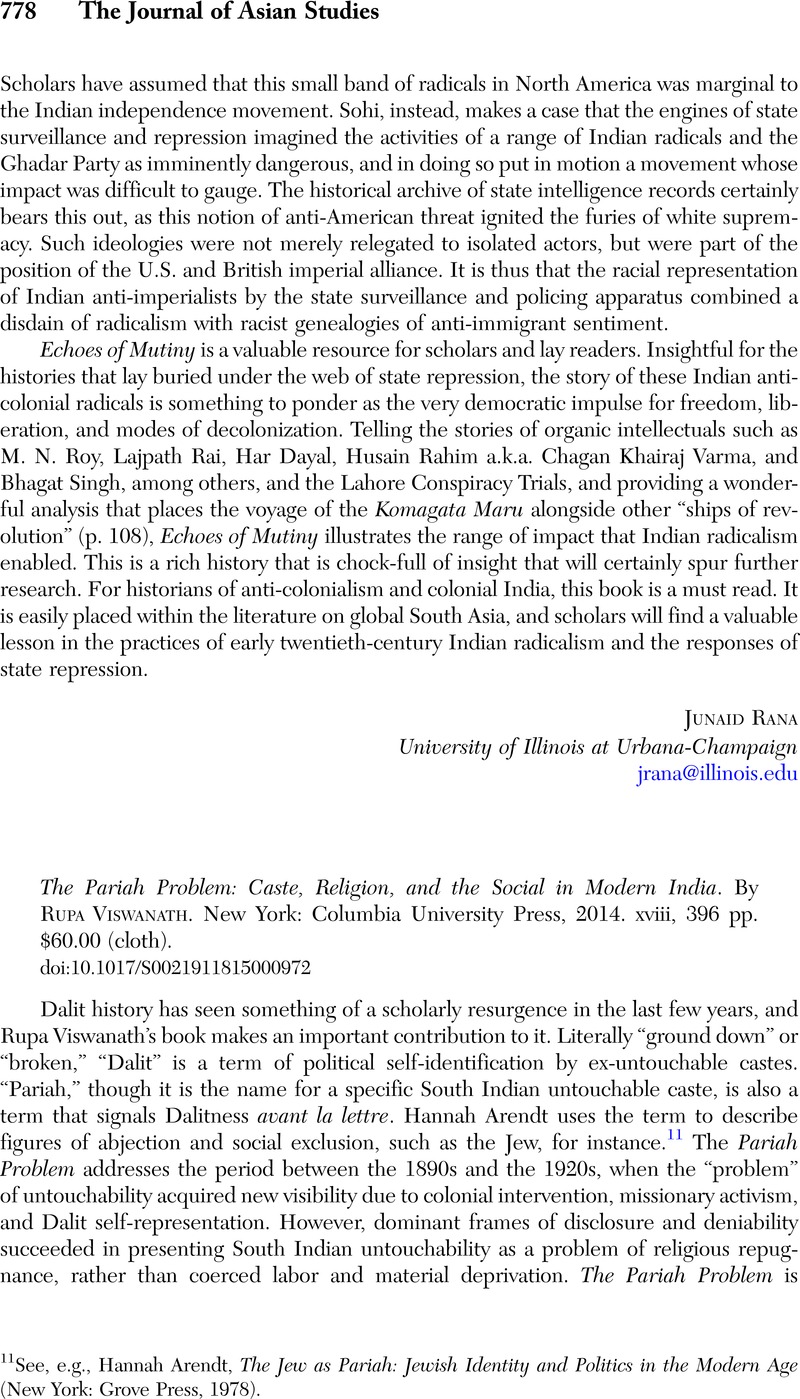No CrossRef data available.
Published online by Cambridge University Press: 18 August 2015

11 See, e.g., Arendt, Hannah, The Jew as Pariah: Jewish Identity and Politics in the Modern Age (New York: Grove Press, 1978)Google Scholar.
12 A representative sample of scholarship would include work by Nicholas Dirks, Eugene Irschick, David Washbrook, M. S. S. Pandian, V. Geetha, and S. V. Rajadorai, as well as the vibrant Tamil-language scholarship devoted to the topic, including that of anti-caste thinkers such as Iyothee Thass, E. V. Ramasamy Periyar, and others.
13 Kumar, Dharma, Land and Caste in South India: Agricultural Labor in the Madras Presidency during the Nineteenth Century (New York: Cambridge University Press, 1965)CrossRefGoogle Scholar.
14 Dube, Saurabh, Untouchable Pasts: Religion, Identity, and Power among a Central Indian Community, 1780–1950 (Albany, N.Y.: State University of New York Press, 1998)Google Scholar.
15 Rawat, Ramnarayan, Reconsidering Untouchability: Chamars and Dalit History in North India (Bloomington: Indiana University Press, 2011)Google Scholar.